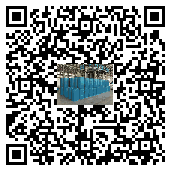UV viscosity-reducing dispersants: an "efficiency catalyst" for photocuring processes.
In precision manufacturing fields such as 3C electronic coatings, digital printing, and semiconductor packaging, UV
photocuring technology has become mainstream thanks to its advantages of instant curing and zero emissions. However,
compatibility issues between pigments and resins have always constrained process efficiency. Until the advent of UV
viscosity-reducing dispersants, these agents have become a catalyst for photocuring systems. These seemingly ordinary
chemical additives actually embody technological wisdom that transcends the limits of physics.
I. Viscosity Reduction and Efficiency Enhancement: Breaking Through the Viscosity Constraints of Traditional Systems
1. Molecular-Level Spatial Isolation, Solving the Pigment Agglomeration Problem
In traditional UV systems, pigment particles are prone to forming nanoscale aggregates due to differences in surface
energy. For example, the surface polar groups of phthalocyanine blue pigments are poorly compatible with resins,
resulting in the prevalence of aggregates larger than 10μm, causing the system viscosity to soar to 15,000mPa·s (25°C).
UV viscosity-reducing dispersants form a monomolecular layer of protection on the pigment surface through an
"anchor-stretch" mechanism:
Anchor groups (such as carboxylic acids and phosphates) form chemical bonds with the pigment surface, with an
adsorption energy of -40 kJ/mol.
The solvated chains (polyester/polyurethane long chains) stretch to create steric hindrance, increasing the effective
collision distance between particles by 5-8 times.
Experiments show that adding 3% of a specialized dispersant reduces the pigment particle size distribution (D90)
from 1.2 μm to 0.6 μm, and the system viscosity plummets to 2,000 mPa·s, improving grinding efficiency by 40%.
2. Optimizing Rheological Properties for Precise Process Control
Dispersants can precisely tailor the system's rheological profile by regulating the pigment-resin interaction:
Improved Shear Thinning: Viscosity is reduced by 80% at high shear rates (e.g., 10⁴s⁻¹ during spraying) while
maintaining stability at low shear rates (10⁻²s⁻¹ during static application).
Balanced Thixotropy:
By adjusting the solvated chain length, the thixotropic index is controlled within the range of 0.3-0.5, balancing both
leveling and anti-settling properties during application.
In UV inkjet printing, this rheological control reduces the printhead cleaning cycle from twice weekly to once monthly,
increasing ink utilization by 25%.
II. Quality Improvement: A Leap from Microstructure to Macroscopic Performance
1. Revolutionary Storage Stability
Dispersants fundamentally address the hard sedimentation problem caused by pigment settling in traditional systems.
Its mechanism of action comprises three layers of protection:
Chemical adsorption layer: Prevents direct contact between pigment particles
Electrostatic repulsion layer: Reduces the particle zeta potential to -50 mV, forming a stable double electrical layer
Steric hindrance layer: Extends the solvated chains to 10-15 nm, creating a physical barrier
Experiments have shown that after 30 days of heat storage at 50°C, a UV system containing a dispersant exhibits only
a slight sedimentation of 0.5%, and returns to a homogeneous state within 10 minutes of repeated shaking.
2. Enhanced Coating Performance
The dispersant's impact on the coating's optical and mechanical properties exceeded expectations:
Improved light transmittance: By reducing light scattering from pigment aggregates, the coating's light transmittance
increased from 85% to 92%.
Enhanced hardness: Uniformly dispersed nanofillers form a denser cross-linked network, increasing pencil hardness
from 5H to 6H.
Optimized weatherability: Monolayer coating reduces UV-induced photocatalytic degradation of the pigment,
extending xenon lamp aging test time to 2,000 hours.
In automotive exterior UV coatings, this performance improvement extends the coating's service life from 5 to 8
years, reducing maintenance costs by 40%.
III. Process Compatibility: A "Universal Adapter" Across Industries
1. Multi-Substrate Adaptability
Dispersants achieve precise control over different substrates through molecular design:
Metal Substrates: Dispersants containing phosphate groups can form chemical bonds with iron and aluminum
surfaces, improving adhesion by 30%.
Plastic Substrates: Polyester-based dispersants offer excellent compatibility with PC and PMMA, maintaining 95%
flexibility.
Glass Substrates: Dispersants modified with silane coupling agents reduce contact angles from 80° to 10°,
significantly improving wettability.
In UV coatings for smartphone glass cover panels, this adaptability increases the coating-substrate bond strength
by 50%, increasing the drop test pass rate from 85% to 98%.
2. Breakthrough in Light Source Compatibility
Modern dispersant systems have overcome their reliance on traditional high-pressure mercury lamps:
LED-UV compatibility: Developing dispersants containing photoinitiator groups that can be activated at a
wavelength of 395nm, reducing energy consumption by 60%.
Electron beam curing compatibility: By introducing unsaturated double bonds, photoinitiator-free electron beam
curing is achieved, increasing cure depth by three times.
Dual-mode curing: Designing dispersants that respond simultaneously to UV and thermal energy increases curing
speed by two times.
In the semiconductor packaging industry, this compatibility has reduced wafer thinning process time from 4 hours
to 1.5 hours, increasing equipment utilization by 60%.
IV. Green Manufacturing: A Model of Sustainable Technology
1. Achieving Zero VOC Emissions
Traditional solvent-based dispersants contain 30%-50% organic solvents, while UV viscosity-reducing dispersants
are designed with 100% active ingredients:
Adaptable to waterborne systems: Developed zwitterionic dispersants to reduce VOC levels in waterborne UV
systems to <5g/L
Solvent-free formulation: Supercritical CO₂-assisted dispersion technology completely eliminates the use of organic
solvents
Bio-based raw materials: Using ricinoleic acid, cardanol, and other raw materials reduces the carbon footprint by
40%
In the packaging and printing industry, this green transformation has reduced solvent recovery costs by 70% and
reduced workshop VOC concentrations from 200mg/m³ to below 10mg/m³.
2. A Revolution in Energy Efficiency
Dispersants significantly reduce energy consumption by optimizing cure kinetics:
Improved Light Absorption Efficiency: Increases pigment UV light absorption from 65% to 90%, reducing cure
energy density by 30%
Oxygen Inhibition Suppression: By adding antioxidant groups, the surface-free time is shortened from 5 seconds
to 1 second
Enhanced Deep Cure: Increases cure completeness of a 1mm thick coating from 80% to 98%
In wood coating applications, this efficiency improvement reduces energy consumption per unit from 0.5kWh to
0.2kWh, increasing production line productivity by 40%.
In this silent materials revolution, UV viscosity-reducing dispersants have evolved from simple process additives to a
critical link between basic research and industrial applications. Using molecular-level intelligence, they redefine the
efficiency boundaries of photocuring technology and provide core technical support for the green transformation
of modern manufacturing. While we enjoy high-definition displays, eco-friendly packaging, and precision electronics,
these invisible molecular engineers are quietly writing the legend of industrial efficiency.


